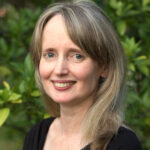
Patients in one skin cancer hot spot are set to access ‘game changing’ melanoma screening.
A 3D scanner that captures every nook and cranny of a patient’s skin will be available to NSW Mid North Coast residents next year to improve early detection and boost melanoma research.
The scanner will be one of 15 whole-body imaging machines to be rolled out across NSW, Queensland and Victoria as part of a three-year, $10 million melanoma imaging research project run by the Australian Cancer Research Foundation’s Australian Centre of Excellence in Melanoma Imaging and Diagnosis.
Minister for Medical Research David Harris said Port Macquarie community health campus had installed the Vectra 3D whole body scanner and the first participants were set to be enrolled in the new year.
“This advanced 3D imaging system will help improve early detection and diagnosis of melanomas, particularly in regional areas,” he said.
Mid North Coast Local Health District chief executive Stewart Dowrick said the scanner used 92 digital cameras to capture a patient’s entire skin surface.
Software then constructed a 3D image of the patient and documented every lesion on the body, he said.
“Moles and lesions are tagged with a unique number which helps to track them over time and monitor any changes in lesions which have been identified as concerning.”
The scanner would help to build long-term capacity toward early detection of melanoma in the region, he added.
The 3D scanner will be able to take a total body image within milliseconds and enable clinicians to detect skin cancers via a telemedicine network, according to the Australian Cancer Research Foundation.
Each machine will have the capacity provide around 3000 examinations a year, the ACRF said.
Jill Wong, MNCLHD district director integrated care, allied health and community services, said: “This 3D body scanner is a game changer in terms of the screening capability and early detection of melanomas, particularly for those at high risk of developing skin cancers.”
Minister for Regional Health Ryan Park said the Mid North Coast was one of NSW’s melanoma hot spots.
“It is the most common cancer in the region with more than five people diagnosed each week,” Mr Park said.
“Melanoma is the deadliest form of skin cancer, and early detection can potentially be lifesaving.”
Labor spokesperson for Port Macquarie Cameron Murphy said the technology would enable residents of Port Macquarie and surrounding communities to take part in melanoma research and the development of new screening methods.
“We know residents of coastal locations like Port Macquarie spend a lot of time in the sun,” Mr Murphy said.
The Australian Centre of Excellence in Melanoma Imaging and Diagnosis is a partnership of The University of Sydney, University of Queensland and Monash University.

